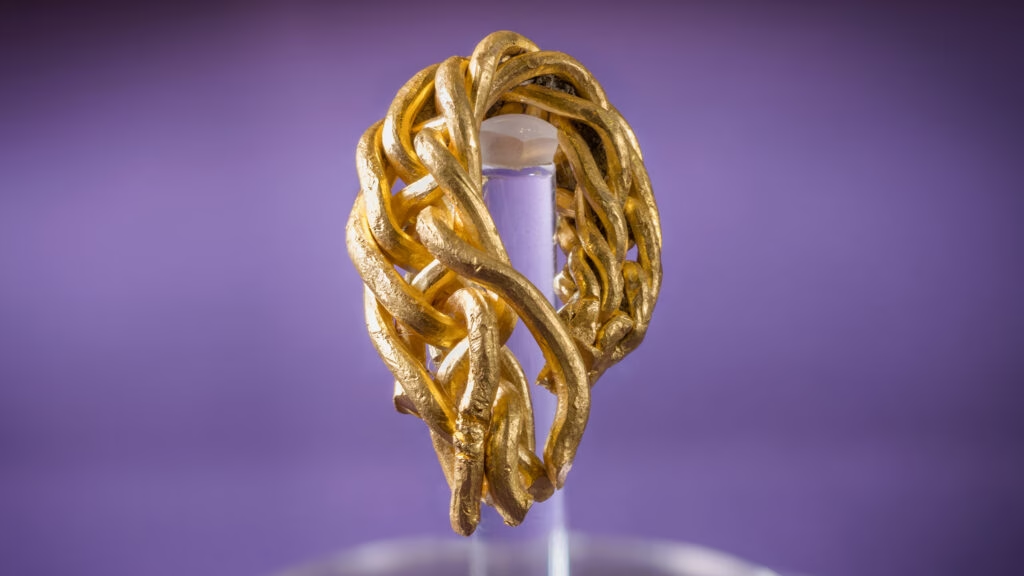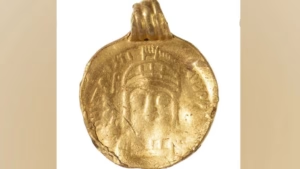A pair of rare gold brooches, buried in the fields of southwestern Jutland more than a thousand years ago, are rewriting our understanding of cultural transitions in the Viking Age. Known as the Hornelund Brooches, these artifacts are masterpieces of Viking goldsmithing that blend traditional Norse mythology with early Christian iconography—a unique fusion for their time.
A Glimpse Into a Cultural Crossroads
Discovered accidentally in 1892 by a farm laborer near the town of Varde, the brooches were found alongside a gold arm ring, forming a mysterious hoard. Though the landowner turned the items over to the National Museum of Denmark (receiving a reward), the site was never professionally excavated. To this day, scholars don’t know whether the treasure belonged to a warrior’s grave, a homestead, or a hastily hidden stash during a time of upheaval.
What makes the brooches so compelling is their artistic hybridity. One brooch is adorned with four forward-facing animal heads—a bold, symmetrical motif rooted in Norse pagan symbolism. The other features delicate vine and leaf patterns, echoing Christian themes where the vine represents Jesus as the “true vine” and resurrection.
Crafted in a Golden Age
Measuring 8.5 cm (3.3 inches) in diameter and weighing 60–75 grams each, these brooches are not only heavy with gold but with cultural meaning. During the early 11th century, the Jutland Peninsula was a thriving hub of craftsmanship, producing luxury items for local elites and possibly for trade across the Viking world.

While similar stylistic elements have been observed in finds from Sweden, Estonia, and Slavic territories, the Hornelund Brooches remain unique within Denmark’s archaeological record. Archaeologist Władysław Duczko wrote in 1987 that these pieces are exceptional in their quality and hybrid style, placing them among the finest examples of Danish jewelry ever discovered.
The Silent Witnesses of a Transforming World
These brooches are more than decorative items—they are silent witnesses to a society in flux. At the dawn of the 11th century, Norse paganism was giving way to Christianity across Scandinavia. The artistic elements of these brooches suggest a coexistence of belief systems, possibly worn by individuals navigating both traditions. Such convergence is rarely so clearly expressed in material form.
Preserved for the World
Today, the Hornelund Brooches are housed at the National Museum of Denmark in Copenhagen, where they draw visitors into the richly layered world of Viking artistry and spirituality. As scholars continue to reexamine the hoard, the brooches offer not just gold, but insight—into belief, identity, and the complexity of cultural transformation in medieval Northern Europe.
Cover Image Credit: National Museum of Denmark





